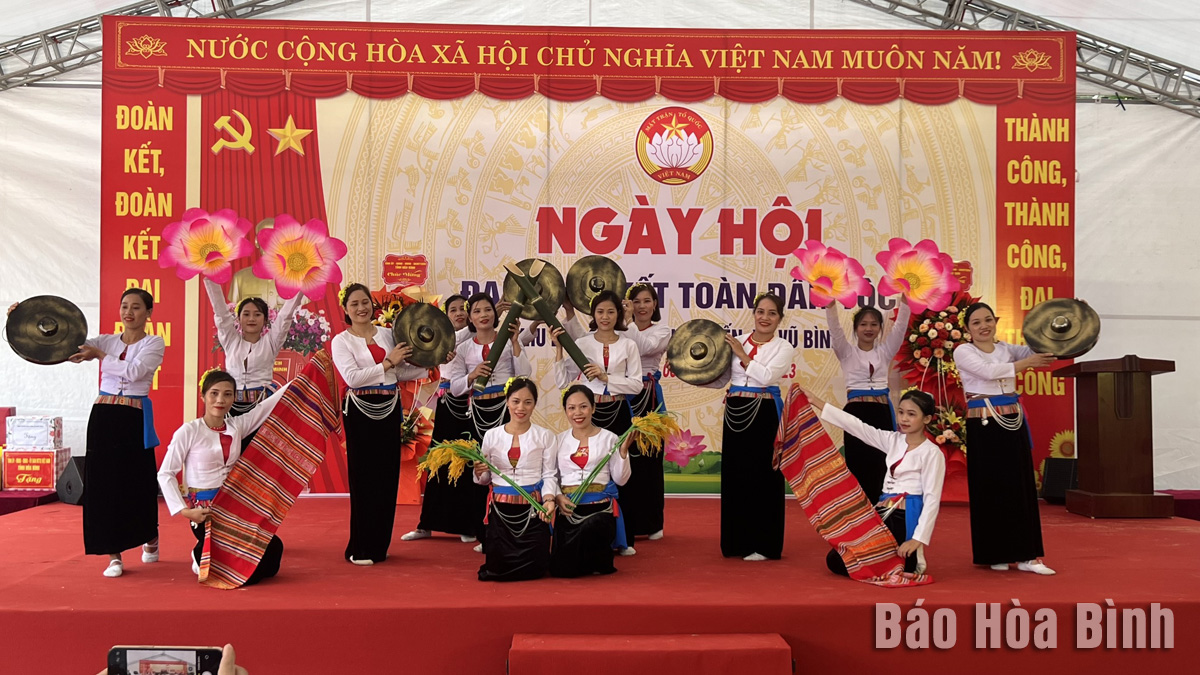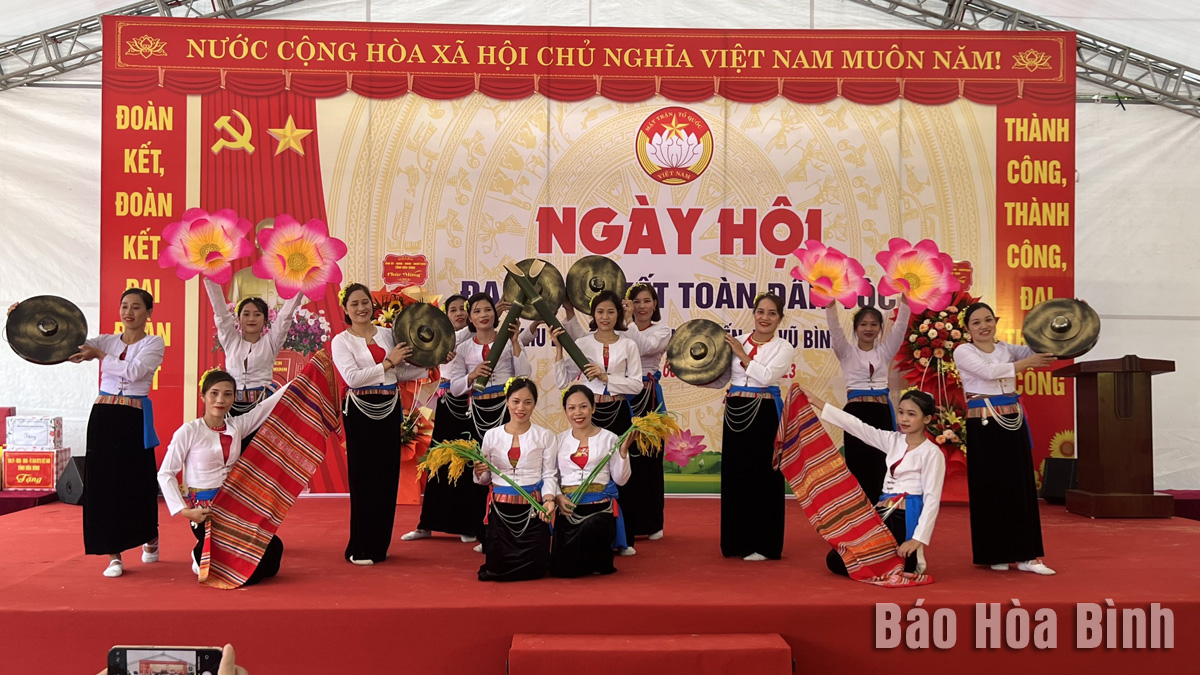
Located about 9km from the centre of Lac Son district, Vu Binh commune is home to 20 hamlets with 2,581 households and 11,925 people, more than 90% of whom are Muong ethnic people. Implementing the movement of "All people stay united to build a civilised lifestyle”, it has obtained many encouraging results, thus contributing to local socio-economic development.
Residents in Quyet Tien hamlet of Vu Binh commune (Lac
Son district) join in a singing and dancing performance at the Great National
Solidarity Festival.
Chairman of the communal People’s Committee Bui
Van Dan said that over the recent past, Vu Binh has encouraged locals to
strongly take part in emulation movements, comply with the Party and State’s
guidelines, policies and laws, develop livelihoods, and preserve traditional
culture.
In 2023, all the 20 hamlets were recognised as
"residential zones of culture” and 2,267 of the 2,581 households as "households
of culture”, equivalent to 87.8%. Among them, 716 households, or over 27.7%,
obtained the title for three consecutive years.
Movements and campaigns have been carried out
with diverse contents and in various forms, helping promote the strength of the
great national solidarity, give a facelift to rural areas, and improve people’s
life quality. Outstanding movements and campaigns include those calling for
solidarity in building new-style countryside and civilised urban areas,
encouraging farmers to boost agricultural production and trade, assisting the
youth to start careers, and engaging war veterans in the building of new-style
rural areas. As a result, many effective crop cultivation, animal farming, and
handicraft production models have taken shape, generating good profit and
income for people, Dan noted.
In addition, the commune has paid attention to
repairing and upgrading roads and mobilising local residents’ participation in
cleaning roads and dredging gutters. Partly supported with resources from the
public, it has completed concreting the roads within and linking many hamlets.
People’s consensus and all-level authorities’ attention have helped Vu Binh
make considerable improvement and better people’s life quality.
So far, the rate of concreted roads across
hamlets has reached 80.5% while concreted and paved canals and ditches now
account for 67.08%. There are no longer makeshift houses in the commune. Per
capita average income this year is estimated at 48 million VND (nearly 2,000
USD) while the multidimensional household poverty rate has been brought down to
12.8%. All local households have also gained access to hygienic water and the
national power grid.
Besides, cultural and social aspects have
recorded improvement, the political system been ensured, and security and
social order firmly maintained. Cultural, musical, and sport activities have
also been held frequently, helping better people’s spiritual life, according to
the official.
With an increasingly vibrant and widespread emulation movement aimed at building cultured residential areas and cultured families, Yen Thuy District has been making steady progress toward improving both the material and spiritual well-being of its people, while fostering a civilized, prosperous, beautiful, and progressive community.
Once lacking recreational spaces and community facilities, Residential Group 2 in Quynh Lam Ward (Hoa Binh City) has recently received attention for the construction of a new, spacious, and fully equipped cultural house. The project followed the model of state support combined with public contributions in both labor and funding.
The "All people unite to build cultural life" movement, which has been effectively integrated with Kim Boi district’s socio-economic development goals, is fostering a lively spirit of emulation across local residential areas, hamlets, villages, public agencies, and enterprises. In addition, through the initiative, traditional cultural values are being preserved and promoted, while community solidarity and mutual support in poverty reduction and economic development are being strengthened.
A working delegation of the Hoa Binh provincial People’s Committee led by its Permanent Vice Chairman Nguyen Van Toan on June 11 inspected the progress of a project to build the Mo Muong Cultural Heritage Conservation Space linked to tourism services in Hop Phong commune, Cao Phong district.
Born and growing in the heroic land of Muong Dong, Dinh Thi Kieu Dung, a resident in Bo town of Kim Boi district, in her childhood was nurtured by the sweet lullabies of her grandmother and mother. These melodies deeply imprinted on her soul, becoming an inseparable part of her love for her ethnic group's culture. For over 20 years, this love for her hometown has driven Dung to research, collect, and pass down the cultural values of the Muong people to future generations.
In the final days of May, the Ethnic Art Troupe of Hoa Binh Province organized performances to serve the people in remote, mountainous, and particularly disadvantaged areas within the province. These were not just ordinary artistic shows, but they were the meaningful journeys aimed at spreading cultural values, enhancing the spiritual life of the people and contributing to the preservation of ethnic minority cultural identities.



